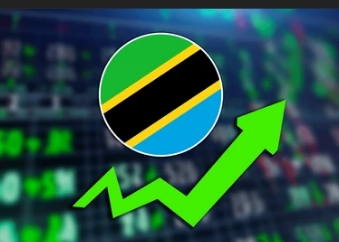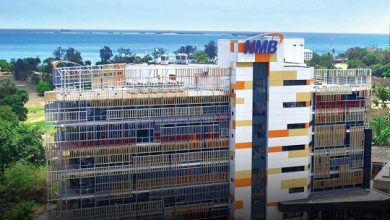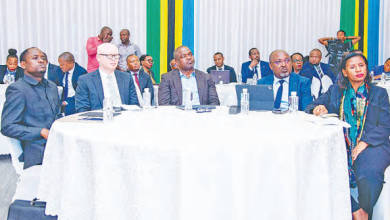How conference shapes TASAF work at grassroots

TANZANIA: OVER the past decade, Tanzania has experienced steady high growth rates at an average of 7 per cent per year, brought about by its dynamic construction industry, services and manufacturing sectors.
The solid economic performance has enabled upturn in public expenditures, increase of social services which impacted on health and education.
Despite the rosy economic outlook, reduction in poverty level has been marginal and the number of the poor has increased.
According to the World Bank (2011), the impact of economic growth on consumption has been relatively equal, but the lowest 10 per cent of the population did not benefit from the economic gains.
While 84 per cent of the country’s poor households are found in rural areas, they remain highly dependent on agriculture for their subsistence and income, and the number of poor in urban areas has increased. Also, rising unemployment in urban areas was due to rapid urbanization and rapid expansion of labour force.
While enrolment rate in primary education has increased, the enrolment rate in secondary level has lagged.
Also, the government is still beset with high malnutrition rate, approximately 38 per cent of children stunted, with 13 per cent severely stunted.
To exacerbate the condition of food insecurity being experienced by households, particularly in rural areas, the presence of extreme weather conditions did not offer favorable options to those who are depending on agricultural activities for their food consumption and livelihood.
The recurrence of climatic shocks and other environmental degradation push households to resort to negative coping mechanisms which further erode their capacity to benefit from the economic gains of the country.
An estimated 2 million persons are experiencing food insecurity in the country.
To address the gaps, the government has committed to installing a comprehensive safety net for assisting the poor and vulnerable households, to have access to income, health and education.
Social Protection was adopted as one of key strategy to address poverty.
In the initiative, the Tanzania Social Action Fund (TASAF) was set-up by the government in 2000, to pursue collaborative efforts on poverty reduction programmes.
TASAF I (2000- 2005) was for providing social services delivery, capacity enhancement and assisted food insecure households, in rural and peri-urban areas.
TASAF II (2005-2010) built on earlier programme results, tried to catch-up the lack or shortage of social services and income poverty in rural and urban households – to address the targets of MKUKUTA by 2010 and the Millennium Development Goal (MDG) by 2015.
TASAF III (2013 – present) endeavours to consolidate the gains of previous programmes and introduce social protection through PSSN, still targeting poor and vulnerable households in both urban and rural areas.
Equally, the UN joint programme to support Tanzania’s Productive Social Safety Nets (PSSN) was setup as key strategy to operationalise social protection in the country.
The objective is to increase income security for the enrolled 1.1 million poor and vulnerable households, while improving consumption.
To attain this, a set of concerted actions has been recommended, as follows: i) Establishment of a safety net with transfers linked to participation in public works and adherence to core-responsibilities under Conditional Cash Transfer (CCT); ii) Support to community-driven for livelihood enhancement and increase incomes; iii) Targeted infrastructure development focusing on education, health and water to enable service poor communities to realise the objectives of the safety net; and iv) Capacity-building to ensure adequate programme implementation by actors and stakeholders at national, regional, local government and community levels.
ALSO READ: IMF: Tanzania economy to rebound to 6.5pc
In the course TASAF initiatives have improved basic social and economic services and protected vulnerable groups, including women and children.
Specific attention was given to the HIV/AIDS epidemic and the involvement of civil society and non-government organisations (NGOs/CBOs) in rural development issues.
Collaborated with other factors, Tanzania thereafter graduated to a Lower Middle-Income Country status in July 2020 following a long stretch of high growth and macroeconomic stability.
By July this year, TASAF announced a plan to phase out its 400,000 beneficiary households out of its 1.4 household in its targeted group from the poverty bracket.
All these have not been an easy task but pegged on self-assessment by the fund constantly monitoring and evaluating its activities to make the decision.
Reached for a comment on Monitoring Evaluation and Learning, constantly steering their work-Peter Lwanda, an Information, Communication and Technology (ICT) Specialist at TASAF had this to say: “Citing the 17th to 20th September 2024 concluded 3rd Tanzania Monitoring Evaluation and Learning Conference in Zanzibar organised by the Prime Minister Office (PMO) Policy, Parliament and Coordination of Tanzania in partnership with Zanzibar Planning Commission (ZPC) and Tanzania Evaluation Association (TanEA), it was an opportunity for us (TASAF) to also acquire new skills in monitoring, evaluation and learning to enhance their activities.
He further said that by attending the conference, it was a forum to share ideas with stakeholders and showcase their beneficiaries’ products so that the public further becomes aware of their activities right into the grassroots.
This was reflected by the fact that Tanzania is a middle-income, developing African country where the government and development partners take accountability for development results and Monitor, Evaluation and Learning (MEL) practices seriously.
Here, there have been several efforts by different agencies working towards improving local capacities, including strengthening the enabling environment for the advancement of MEL practices in the country, especially through regulatory frameworks structures and mainstreaming into the national development agendas, development projects, and building capacities.
The conference was a platform for Tanzanian and international stakeholders from the public sector, private sector, Civil Society Organisations (CSOs) and Academia to interact and learn from organisations, ministries and Monitor and Evaluation Professionals and practitioners on new trends, dynamics and opportunities from MEL, as well as addressing challenges of MEL practice.





